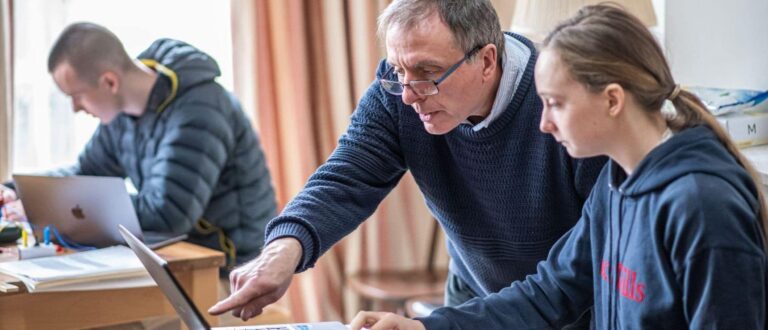Explore the benefits of distance learning at Greene’s College Oxford.
The pandemic changed many aspects of our society, including the way that students choose to interact with their education. Greene’s identified, more than a decade before this historic event, that distance learning-based tuition would be an ideal way for students across the world to gain access to well-taught educational programmes that would otherwise be unavailable to them. For Greene’s, this included providing online access to our professional network of subject-specialised tutors, many of whom are graduates of the Universities of Oxford and Cambridge.
But why do more and more students choose to study online? Here are four key factors that explain why:
- Flexible Learning
Travelling to tutorials in central Oxford can be time consuming and stressful – arrangements need to be carefully planned and a location booked. With online tuition the only arrangement that needs to be made is to fix a mutually convenient time for students and tutors. A multinational study, published in 2020 in the International Journal of Educational Technology in Higher Education, found that almost half of students asked decide to enrol in distance education courses because they ‘don’t have to travel to school’1, further supporting our hypothesis.
2. Quality, Online and Offline
In contrast to ‘distance learning’ programmes, where students are mostly self-taught through the provision of materials, online tutoring preserves the value of the tutorial method of learning: one-to-one individualised learning. One key reason why students give up with a distance learning programme is that they find it hard to remain motivated and find mustering the self-discipline to keep up a daily study routine daunting and difficult. Child Mind Institute, an independent, national, and non-profit organisation, reported that ‘once students get off track […] it can feel daunting to try to catch up’2, which can lead to feelings of disengagement. An associated programme of online tuition can be the solution to both of these problems.
3. Online Resources
Students and tutors can access digital-only resources. Some instances include:
- Using a digital whiteboard to access notes on any device;
- Combining a short demonstration from YouTube to prompt discussion around a concept;
- The recording of tutorials for revision references.
The possibilities and the way in which online resources can be combined into an online tutorial are almost limitless.
4. Students’ wellbeing
Online tutoring allows students to have their tutorials from the comfort of their own surroundings. This means that they have access to all of their notes and other study materials; and are also working from familiar surroundings. UCAS, in an article titled ‘How your surroundings affect the way you study’, highlight that lecture hall seating specialists have identified that ‘when you are comfortable, you will stay focused and motivated for longer, which will help you to absorb more information.’3 (Although, it is key to keep in mind that ‘disorganised and messy spaces can create feelings of stress and anxiety, which will have an obvious negative effect on your learning.’ No doubt, familiar and comfortable surroundings can boost engagement with learning.







